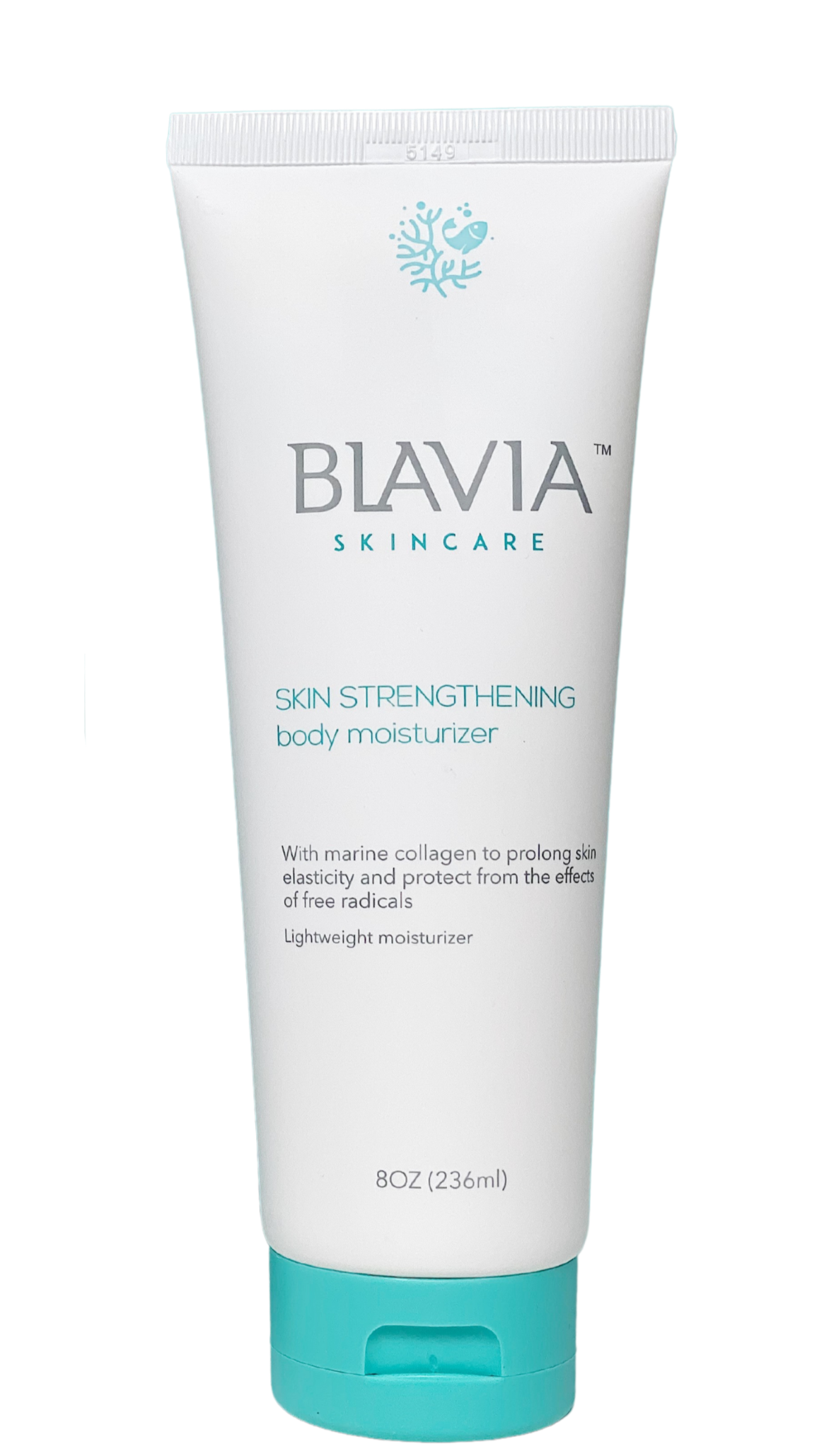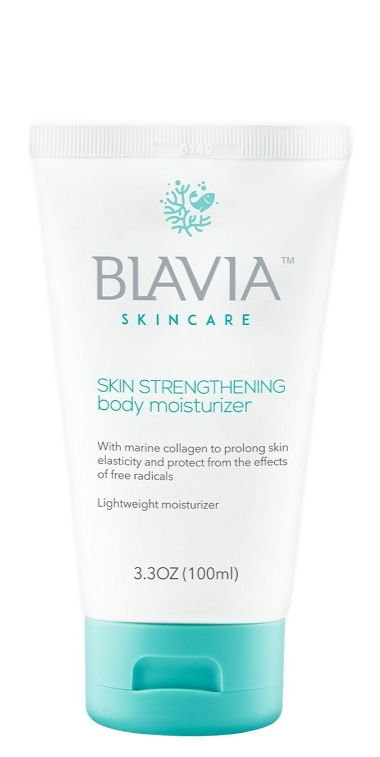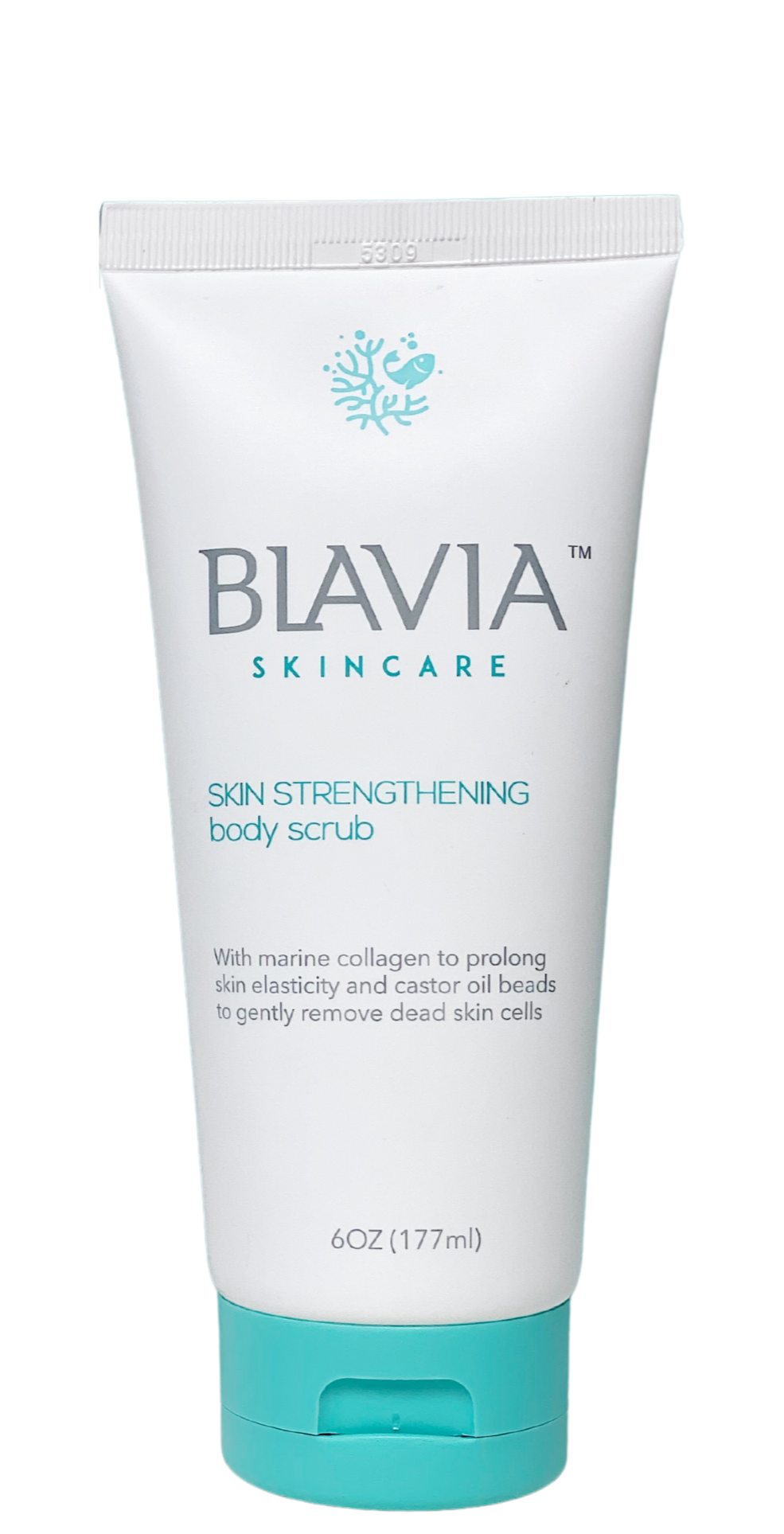
Understanding Skin Exfoliation
Exfoliation is the best way to slough away dead skin cells, dirt and debris that could otherwise sit atop your skin and cause dullness and dryness.
We typically associate exfoliation with the use of granular scrubs, but there are other effective methods too. Read on as we scrub away the myths and reveal the truth about proper skin exfoliation...
Physical Exfoliation
Physical exfoliation, the best-known form of exfoliation, involves using a scrub product containing granular particles. These range from sugar and sea salt to micro-beads and crushed nuts and seeds.
These particles’ rubbing against your skin dislodges dead skin cells and debris, allowing them to be washed away and ultimately revealing softer, even-textured, more youthful skin.
The trick to successful physical exfoliation is to use a gentle scrub like Blavia Skincare’s Skin Strengthening Body Scrub no more than twice a week. Exfoliators with sharper edges, like sugar and nut shells, can create microscopic tears in your skin, leading to inflammation and moisture loss.
Chemical Exfoliation
Chemical exfoliation uses gentle acids, like salicylic and glycolic acids, to buff away dead skin. These exfoliators tend to be gentler on sensitive skin, and can include alpha hydroxy acids (AHAs) and beta hydroxy acids (BHAs), fruit enzymes, and citric and malic acids.
When added to skincare products, these ingredients reduce inflammation, control oil production and brighten skin, while also improving its texture.
Choosing the Best Option for You
Physical exfoliation tends to offer the most immediate benefits, as long as a gentle scrub is used. Chemical exfoliation provides a softer rub-free alternative, but its results are usually only visible after 4-8 weeks.
The choice is up to you – but remember, exfoliation should always be a gentle process, so always treat your skin as though you are touching a delicate balloon!





















